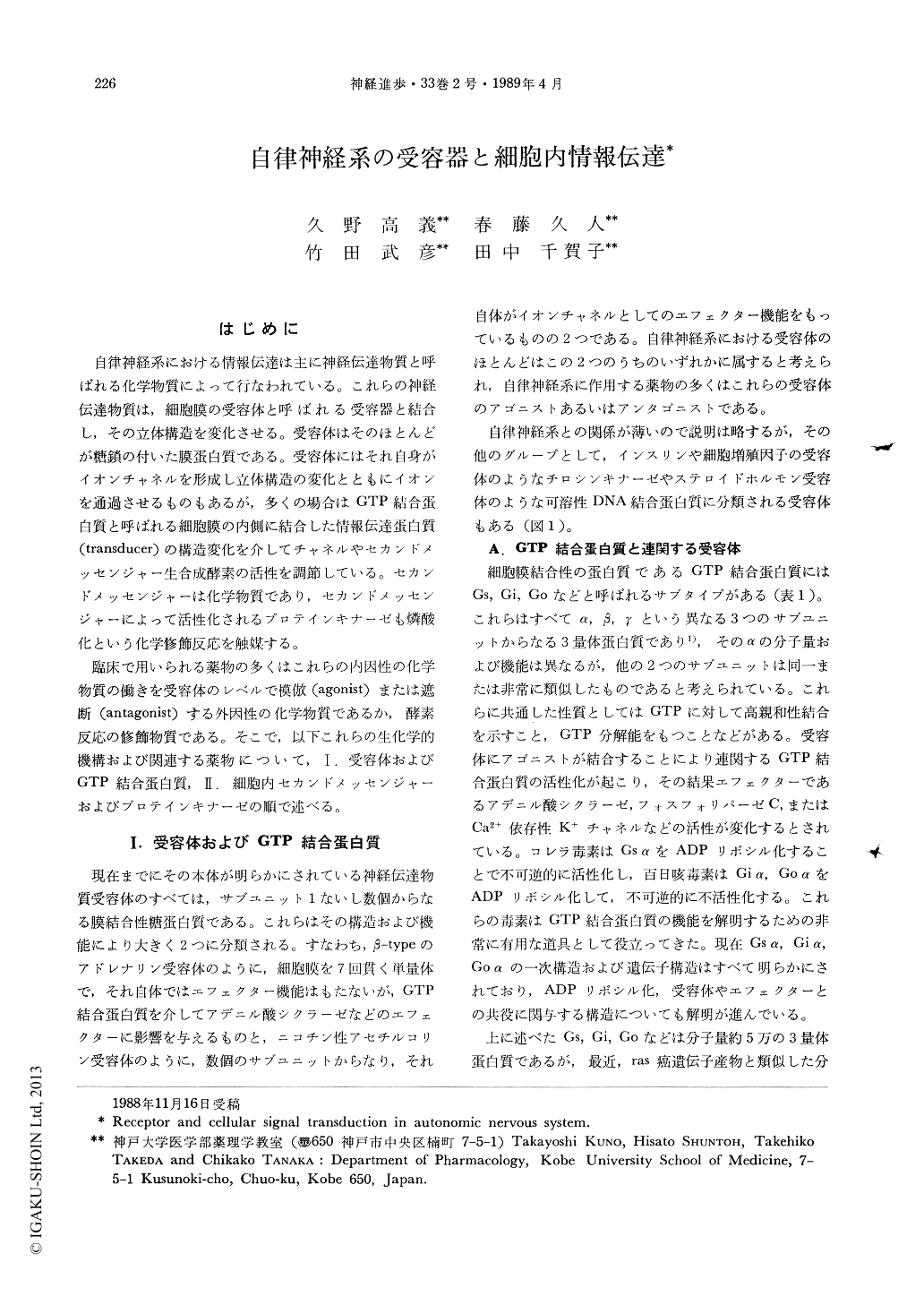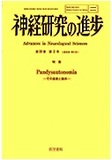Japanese
English
- 有料閲覧
- Abstract 文献概要
- 1ページ目 Look Inside
はじめに
自律神経系における情報伝達は主に神経伝達物質と呼ばれる化学物質によって行なわれている。これらの神経伝達物質は,細胞膜の受容体と呼ばれる受容器と結合し,その立体構造を変化させる。受容体はそのほとんどが糖鎖の付いた膜蛋白質である。受容体にはそれ自身がイオンチャネルを形成し立体構造の変化とともにイオンを通過させるものもあるが,多くの場合はGTP結合蛋白質と呼ばれる細胞膜の内側に結合した情報伝達蛋白質(transducer)の構造変化を介してチャネルやセカンドメッセンジャー生合成酵素の活性を調節している。セカンドメッセンジャーは化学物質であり,セカンドメッセンジャーによって活性化されるプロティンキナーゼも燐酸化という化学修飾反応を触媒する。
臨床で用いられる薬物の多くはこれらの内因性の化学物質の働きを受容体のレベルで模倣(agonist)または遮断(antagonist)する外因性の化学物質であるか,酵素反応の修飾物質である。そこで,以下これらの生化学的機構および関連する薬物について,I.受容体およびGTP結合蛋白質,II.細胞内セカンドメッセンジャーおよびプロテインキナーゼの順で述べる。
Most extracellular signal molecules bind to their specific cell surface receptors, and then the signals is transduced into intracellular effects via GTP-binding proteins, ionic channels, various second messengers, and their respective protein kinases. Recent innovations in molecular cloning and sequence analysis has revealed the great diversity of subtypes of such molecules. Plasma membrane receptors have been classified into (1) ion-channel-containing receptors (e.g. nicotinic acetylcholine receptor, GABA-A receptor, glycine receptor), (2) seven-transmembrane segment superfamily of GTP-binding protein-coupled receptors (e.g. β1-, β2- and α2-adrenoceptors, muscarinic acetylcholine receptors, 5HT-1A and 5HT-1c serotonin receptors, substance K receptor), and (3) tyrosine kinase-containing receptors with one transmembrane segment (e.g. insulin receptor, epidermal growth factor receptor). Once ligands bind to their receptors, in most cases such signals are transmitted by the receptor activating the production of one or more second messengers (cyclic AMP, cyclic GMP, diacylglycerol, Ca22+). Second messenger generating systems are regulated by GTP-binding proteins. Cyclic AMP synthesis by activa-tion of adenylate cyclase is regulated by Gs and Gi. Thus, elevated cyclic AMP activates the cyclic AMP-dependent protein kinase. Membrane phosphoinositides (PI) is hydrolysed by activation of phospholipase C evoked by Ca2+-mobilizing receptor (e.g. α1-adrenoceptor, M1 muscarinic acetylcholine receptor) and consequently produce inositol-1, 4, 5-trisphosphates and diacylglycerol. The former releases Ca2+ from intracellular store sites, the latter activates protein kinase C. PI-specific phospholipase C is also regulated by a GTP-binding protein (Gp). Recent molecular biological studies have shown a great multiplicity in these molecules including GTP-binding proteins, phospholipase C, cyclic AMP-dependent protein kinase, protein kinase C and calmodulin-dependent protein kinase.

Copyright © 1989, Igaku-Shoin Ltd. All rights reserved.


